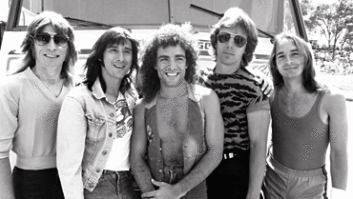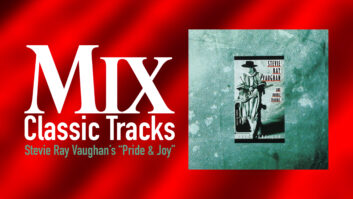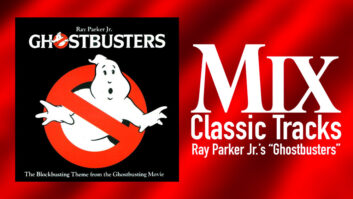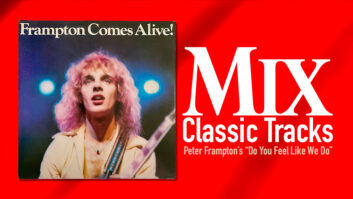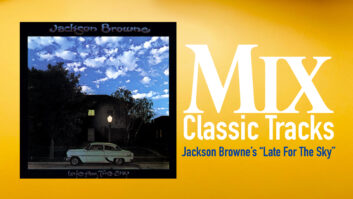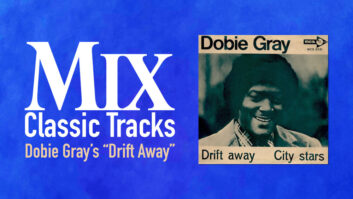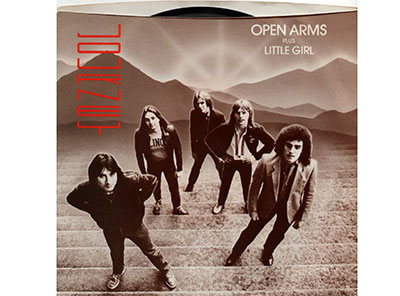
VH-1 named it the greatest power ballad of all time, and even though it only went to Number 2 on the Billboard charts in February 1982, “Open Arms” remains Journey’s biggest U.S. hit. Journey fans might dispute that “Don’t Stop Believin’” is their most popular, but that song, which has become an anthem of sorts, thanks in part to politics and sports, went only as high as Number 9.
When the group went into Fantasy Studios in Berkeley, Calif., to record Escape in April of 1981, it was with the band that was going to catapult them to the massive success they were destined to achieve. They were not a new band by any means. Escape would be their seventh album. Gregg Rolie had just exited, drummer Steve Smith had joined the previous year and this would be the first Journey project for Jonathan Cain of Babys fame. He would have a lot to do with the future success of the band, and the beginnings of this song was left over—actually, a John Waite rejection—from The Babys and a display of what Cain and lead singer Steve Perry could do in the writing department.
With the evolution of players came a change of sound, and it wasn’t necessarily one lead guitarist Neal Schon welcomed with open arms (pun intended) on this particular track.
Kevin Elson, who produced the album along with Mike Stone, corroborated what Perry told VH1 Behind the Music: that the session was made somewhat of an ordeal by Schon.
“It wasn’t so much during the tracking,” Elson says. “It really was while the vocals were going on. We had to send him away. You can’t have someone sitting around in the control room making faces while the singer is trying to sing a song. Perry sang with such emotion.”
Schon, whose roots were formed playing with Santana at age 15, would call those kinds of ballads “Mickey Mouse” or “Mary Poppins.” He did not want to see the band becoming a different version of itself.
In the Behind the Music episode, Perry also mentioned that after the band performed the song in concert for the first time on tour, Schon commented, “Man, that song really kicked ass!” And Perry recalled, “I looked at him and I wanted to kill him.”
Elson first heard the song at rehearsals in a nearby Oakland warehouse. He recalls that it was “short and to the point.” “There was no point in having giant vocal choruses or guitar solos. It was just a beautiful ballad,” Elson says. They spent six weeks in that warehouse honing the tunes before entering Fantasy.
“‘After the Fall’ was probably the song we worked on more than any particular song in the studio, just getting the right feel because it was such a different feel for the band,” Elson says. “‘Escape’ had so many sections, but everything else was just so straight-ahead. ‘Open Arms’ was not difficult at all. They played it at the warehouse quite a bit and rehearsed it. Then it was just a matter of what tempo delivered. That’s why I always pushed for the singer to sing with the track. Because if you wait till the end, you might feel you wish it were a little slower or a little quicker.”
And Perry always sang with the track. Elson says he believes that what set “Open Arms” apart from other power ballads of the time was Steve Perry’s vocal.
“Whenever we tracked, he sang, just to kind of get to feel where the drums might push or where the guitar might lift,” Elson says. (As an aside, Elson adds that the guide vocal on “Mother, Father” on the same album is actually what ended up on the record.)
“Everything we did, we did full-on,” Elson says. “You would not believe what it would sound like if you pulled the vocals back. Basically, all those songs were so well-rehearsed before we went in. Nobody liked belaboring time in the studio, so everything was done live. The guitar solos were done live, we tracked everything. There was no piecemealing anything, with drum machines or anything. It was always a full-band performance.”
Because of that, they tracked and mixed 16 songs in six weeks, to the total budget of about $110,000.
There were two principal microphones they found best suited for Perry’s voice, depending on the song.
“We used the Neumann U 47 and the M 49,” Elson recalls. “We used the U 47 on the more up things like ‘Escape.’ The U 47 could accept a little more of the hard pushing.” On the “Open Arms” vocals, they used the Neumann M 49.
“At the time, nobody built a windscreen, so we had a makeshift screen out of women’s hose,” Elson says. “These mics were so sensitive that you had to keep the moisture out as much as possible. Steve had so much air and moisture in his voice that he’d shut them down. He’d sing for hours and hours straight, and all of a sudden we’d hear the microphone degrade. We’d get out a hair dryer and start drying up the tubes. It was quite a process.”
Elson says that at the end of the recording, Perry wanted to buy the mics from Fantasy, but Fantasy refused.
The drum performance and recording are a big part of the power of the song. Steve Smith plays some cymbals in the beginning of the verse of “Open Arms,” which opens with just Cain’s piano and Perry’s vocal. Smith’s drums enter later during the first verse but he doesn’t break out the big-gun drums until the second verse. That, of course, is a combination of the way Smith plays and some recording technique.
“It was a combination of two things: the EMT 250, the first digital reverb that we call the robot, and the close-room sound of it, and then tape delay on an EMT plate,” Elson explains. “We actually used the tape machine delay to decay, so you hear the attack and then you hear the echo after. You almost hear a cannon when it happens because you’re hearing the ‘verb you built come later behind the beat. You hear the attack and you hear kinda the drum decay again later. There was so much room in the song that there’s plenty of room to hear that. On that track it’s basically a guitar, piano, drums and bass. Later we did a quartet—we did many versions of mixes of no strings, yes strings, more strings, less strings. So the drums could be a big part of that song.”
Elson is quick to add that Smith’s sensibility on the drums was a big part of the sound. “Drummers play, but Steve almost plays musical notes,” he says. “It’s almost melody.”
On the outside of the kick drum, they used a Neumann U 47, on the inside they used a beyerdynamic M 88; on the top of the snare an AKG 414, with a Shure SM57 on the bottom; Sennheiser MD421s on the toms, an AKG 451 on the hi-hat, Neumann U 87s for room and overheads. On the piano they used a Neumann U 47 and an AKG 414.
“I believe Neal used the Roland synth guitar on that track,” Elson recalls. “Neal always used his own effects.” Elson said he believes Schon used a Sony C37, an AKG 414 and a Shure SM57.
Fantasy at the time had a Neve 8108 console, Studer A800 24-track tape machine and Ampex ATR 2-track.
Schon’s father, Matt (who also provided arrangements on “Mother, Father”), wrote the charts for the strings, which Elson said was a simple quartet, triple overdub, with Neumann U 87s and AKG 414s to capture.
Despite Schon’s distaste for ballads, “Open Arms” stayed at Number 2 for six weeks.
Elson says he knew immediately it was a hit.
“I knew in rehearsal,” he says. “And moreso when it was finished, just like everyone else that heard it.”
